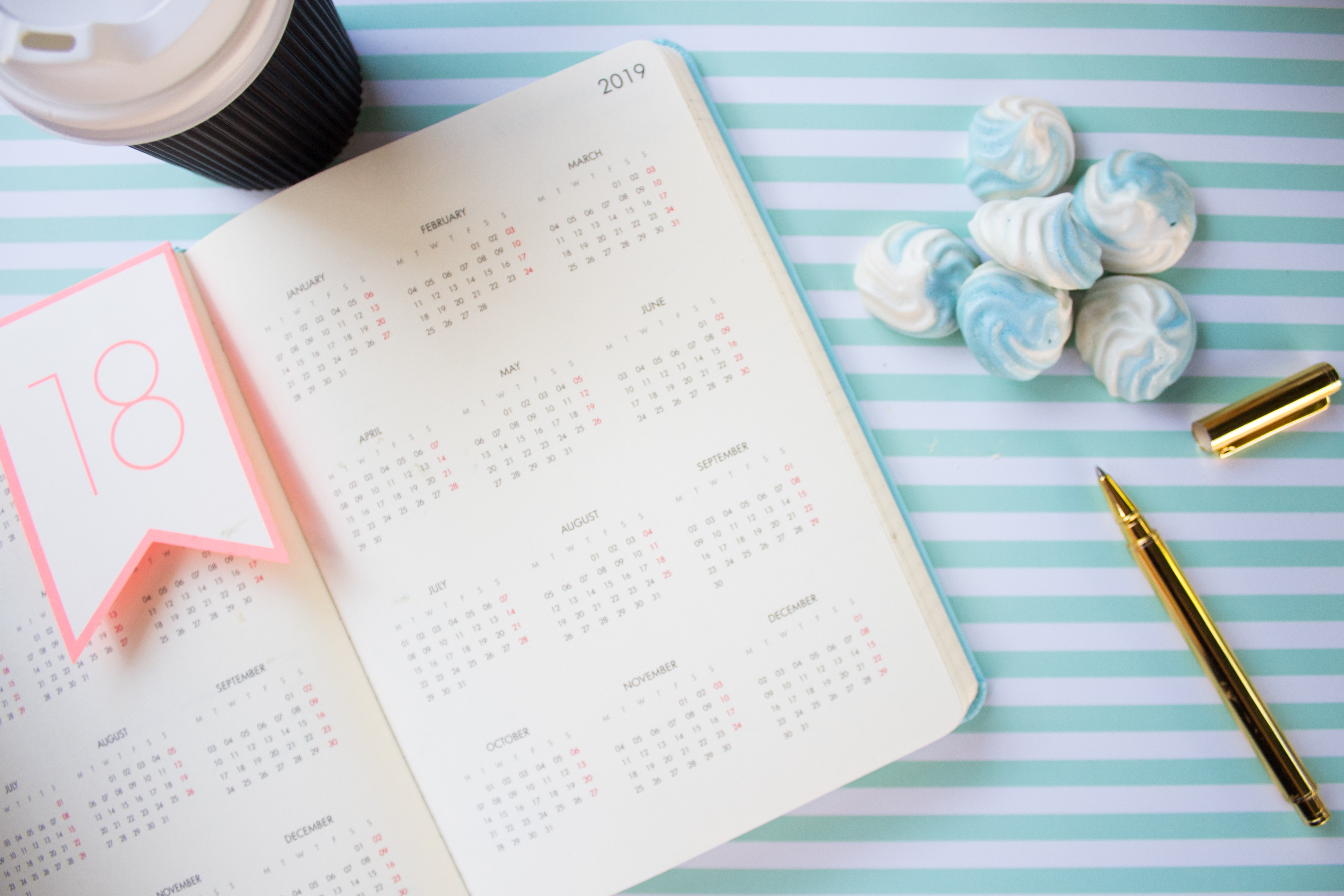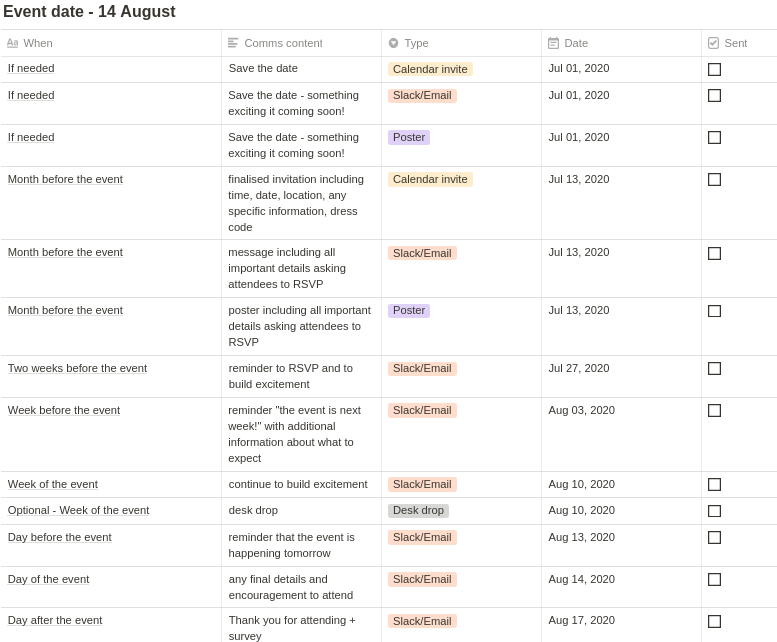How to develop and roll out a calendar of events
This is part 3 of my Work Events: More Than Organised Fun series. You can find the other sections here.
You have the go ahead and a budget to start running events, all you need now is the event.
There are 3 main stages to developing and rolling out an event calendar-
- Developing your calendar
- Creating a comms plan
- Feedback
In this article, we will go through each of these in turn.

How to develop a calendar of events
Developing a calendar of events can seem like a big task. In reality, there are only 3 steps.
Step 1
Make a list of all the types of events you could run in a year. Don't forget to take a look at lists of holidays and "International Day of..." lists for inspiration.
Step 2
Ask yourself two questions -
Question 1 - Why am I running this event?
Every event you run will have a different motivation, for example -
- to encourage team members to be more active
- to educate on a certain topic
- to celebrate
Use these prompts to understand what it is you are trying to achieve and don't be afraid to ask for feedback from different members of your company. Check out my favourite survey tools here.
Question 2 - Why should people care?
This can be a difficult one to answer, especially if you are working with a team with different interests. As a starting point, think about what would make you want to take part. For example, will the event be educational, part of a bigger series or just fun?
Asking these questions will help you whittle down the list to events that will have the most impact. It is also the first step to creating any comms you will share with your team. Your answers don't need to be extensive, but you should spend a few minutes on each event.
Step 3
Once you have your list of events, begin dropping them into a calendar. I tend to do this by hand first (see templates below) before transferring to my calendar. Creating your calendar this way will give you an idea of how your new event calendar could look.
Key tips:
- Make sure you factor in enough time between events so that they don't bunch up in the same time period.
- Be prepared to make cuts if you can't fit in all your ideas.
And that's it! Your calendar of events is complete and ready to be rolled out.
Creating a comms plan & calendar
A successful event calendar is dependent on two things
- The quality of the events
- Team members attending
You quality checked your event calendar as you created it, now focus on getting your team to attend.
Choose how you will share details of the event
When developing comms, you can split them over several streams.
Posters
I love using Canva to create eye catching posters.
Key tip - Once you have decided on imagery and wording for an event, use them across everything you create. This will make sure all comms are coherent.
Email and/or internal comms
Depending on your company or teams preferred communication method, make sure that's where you're sharing information. In the past, Slack was always preferred, so I made sure to focus there. You could create a dedicated channel to share all important information.
Desk drops
For big bang events, "desk drops" are a great way to get the team excited. Examples include -
- Christmas: small gifts - for example gingerbread - and a thank you note from managers or founders for all the hard work that year.
- Summer: small desk plants or branded hats.
If your team is remote, desk drops aren't as easy to create. Think about replicating this by sending an invite and small gift in the post.
Word of mouth
Don't underestimate the power of word of mouth! Within teams there will always be different personalities
- those who jump at the chance to take part in events and will actively encourage others to attend
- those who attend once they see their colleagues are attending
- those who need a final push
By leaning on people in the first group, you can focus more on organising than encouraging attendance.
Creating a comms calendar
The final piece of the event puzzle is knowing when to communicate with your team about an event. Develop a specific comms calendar, to track alongside your event calendar, to ensure your event will be a success.
When building a comms calendar, start with the event date and work backwards. Depending on the scale of the event, which will dictate the amount of notice needed, factor in comms for -
- Day of the event - any final details and encouragement to attend
- Day before the event - reminder that the event is happening tomorrow
- Week of the event - continue to build excitement
- Week before the event - reminder "the event is next week!" with additional information about what to expect
- Two weeks before the event - reminder to RSVP and to build excitement
- Month before the event - finalised invitation including time, date, location, any specific information, dress code
- Important to note - the size of the event will determine if - and when! - you should send a save the date. For large events, for example summer parties, Christmas events and annual company meetings, plan to give 2 months notice to ensure attendance and to facilitate travel if needed. For smaller events, for example Zoom pet shows or quizzes, a few weeks notice should be enough
Tracking your comms calendar
I like to use Notion to track my comms plan as I can link it to specific notes I've made about an event. However, you can also use Trello or Google Sheets. In the example below, I'm working towards an event on the 14th August.

On any given day, I might use more than one method to share details. By doing this, it is more likely than your team members will see the up-to-date information.
Tracking your comms also means you can easily spot clashes with other comms that will be going out. By pre-populating the content column you also save time in the run up to the event as your comms are already written and ready to go.
